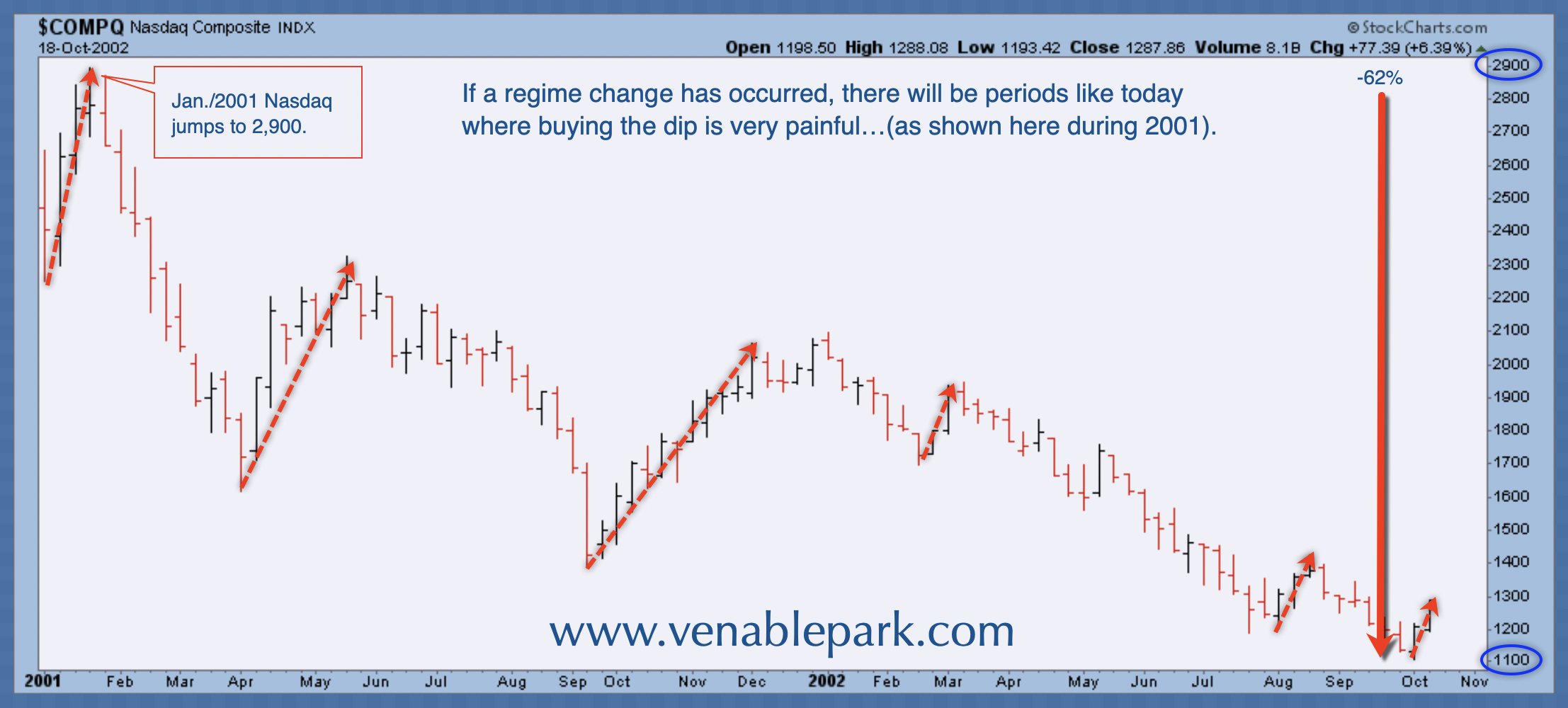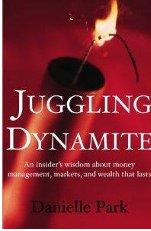Yesterday afternoon, news of a 90-day US trade tariff pause sparked jubilation in stock markets. The 9.5% bounce in the S&P 500 was the third-best day since 1950, and other indices followed suit.
Lest we lack perspective, the other two best S&P 500 days were +12% on October 13, 2008, and +11% on October 28, 2008. Both were short-lived: the stock market tumbled for another five months to March 2009, as the S&P 500 halved.
A similar pattern repeated through 2001 (shown below via the Nasdaq 100, courtesy of my partner Cory Venable). The bear market began in March 2000, and included five vigorous counter-trend bounces (marked with red arrows from the left), each lasting for several days to a couple of months, before gravity reasserted itself. By the ultimate bottom in October 2002, the Nasdaq had lost 78% from March 2000 and 62% from the January 2001 rebound top (noted below on far right).
Traditionally, bear markets last 12 to 24 months and do not recover prior highs for years. Individuals should include the potential for such an outcome in their investment strategy and financial plans today. See more food for thought in The Stock Market’s Fear Gauges Point to a Bounce, Not a Bottom:
Even those disciplined enough to sit still will wonder how far this goes and when it ends. The Covid-19 bear market, the shortest in history, probably provides a misleading guide. The government throwing everything but the kitchen sink at it turned sentiment around. This time around, to use the horror-film trope, the call is coming from inside the house.
If this becomes a severe bear market then the bottom will come at the point of capitulation when investors are disgusted with stocks. We are just too recently removed from a positive peak in sentiment and AI optimism.
As we will probably soon relearn, markets don’t go down in a straight line. But they go down a lot more than we might imagine.
Those interested in deep and flexible thinking about tariffs and the many moving parts will find the discussion below with economist Anna Wong worthwhile.
Anna Wong is the Chief US Economist at Bloomberg and previously worked at the Federal Reserve, White House Council of Economic Advisors, and US Treasury Department. I can imagine few people in the world better suited to analyze and forecast the impact of the tariffs.
Yesterday, on news of a US tariff increase for China, Anna and her team updated their impact projections and determined that the hit to US consumption will be more significant than previously estimated.
We calculated that post Trump “put” today, the tariff mix is actually worse —China exports more consumer goods to US than other countries, so boosting that (to 125%) relative to others will boost the hit to consumption goods. pic.twitter.com/Yw9QIgcXqG
— Anna Wong (@AnnaEconomist) April 9, 2025



